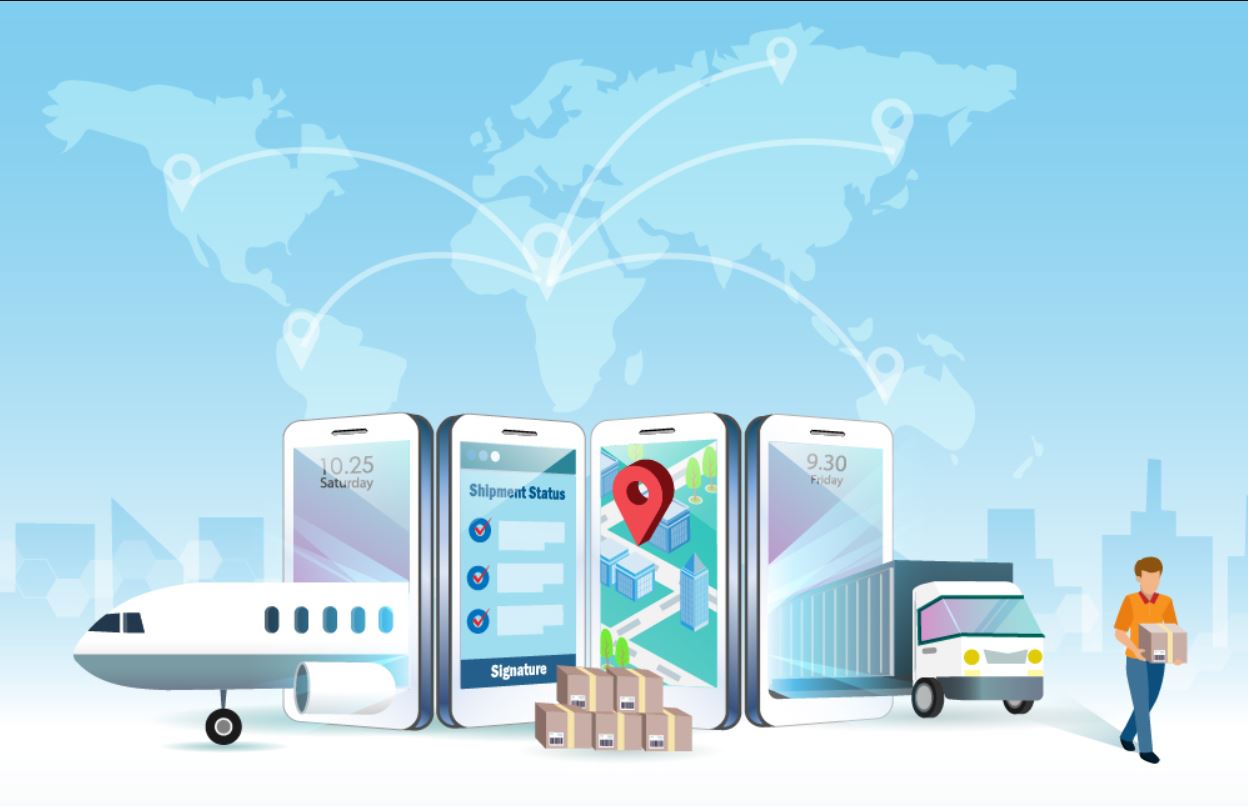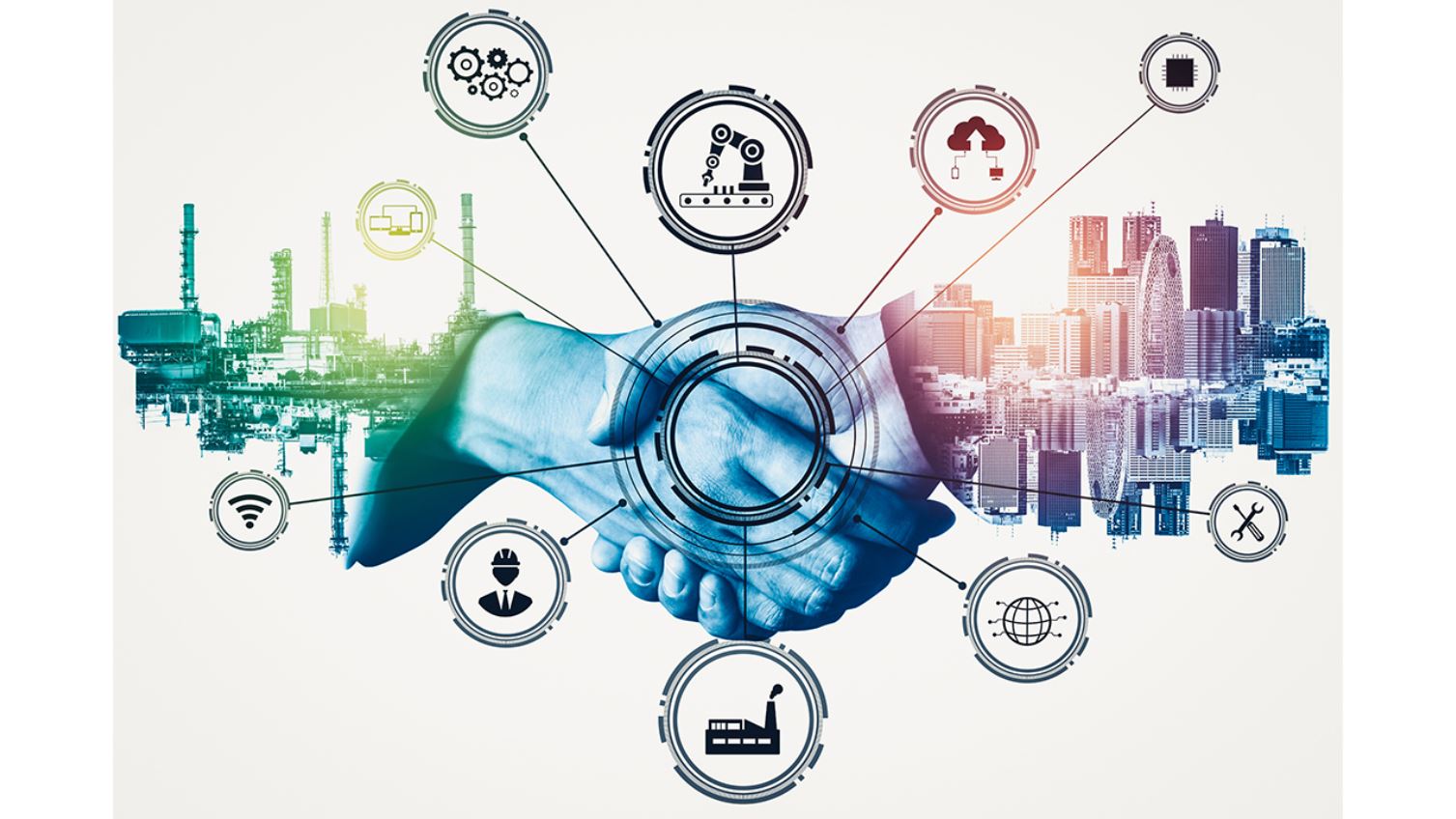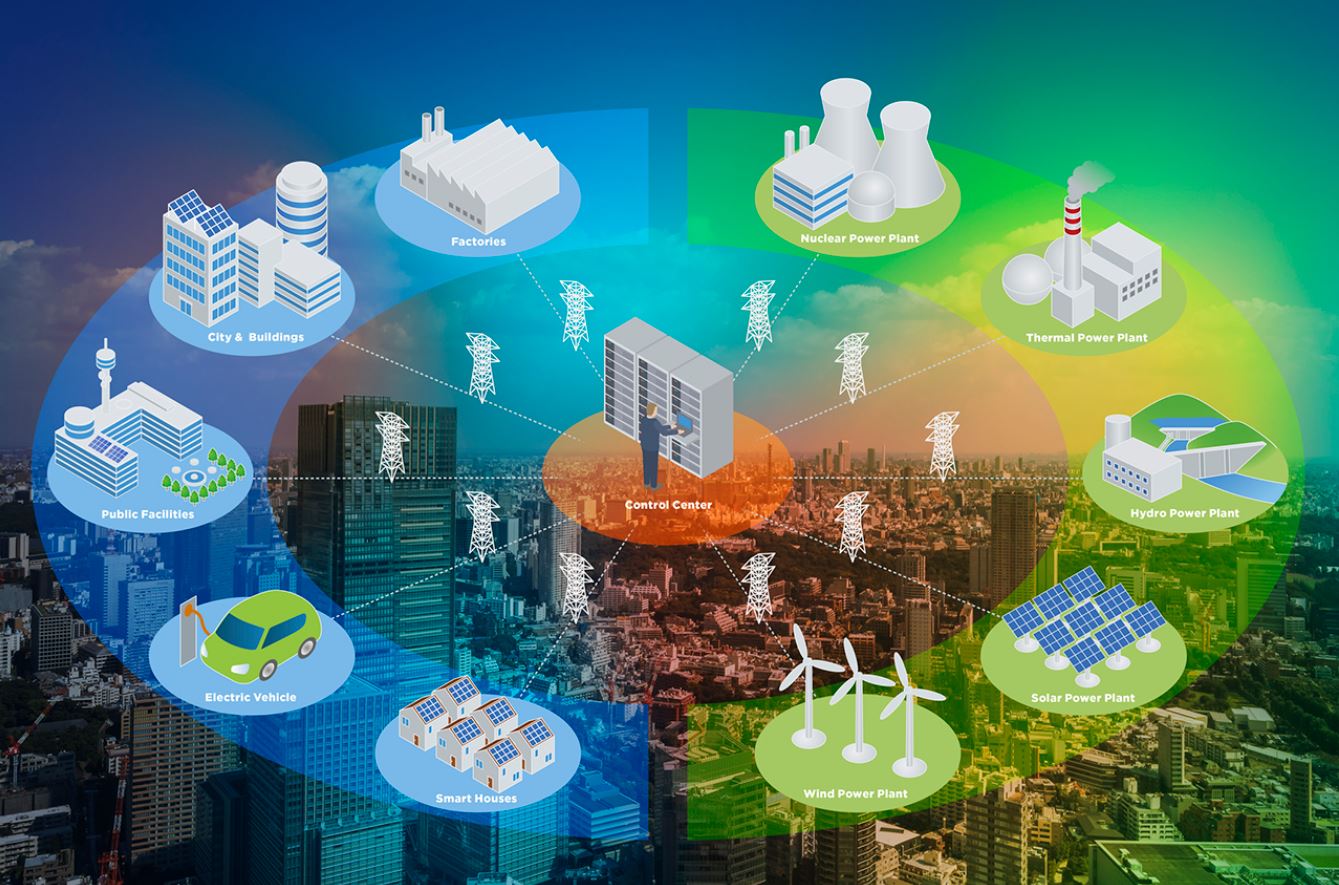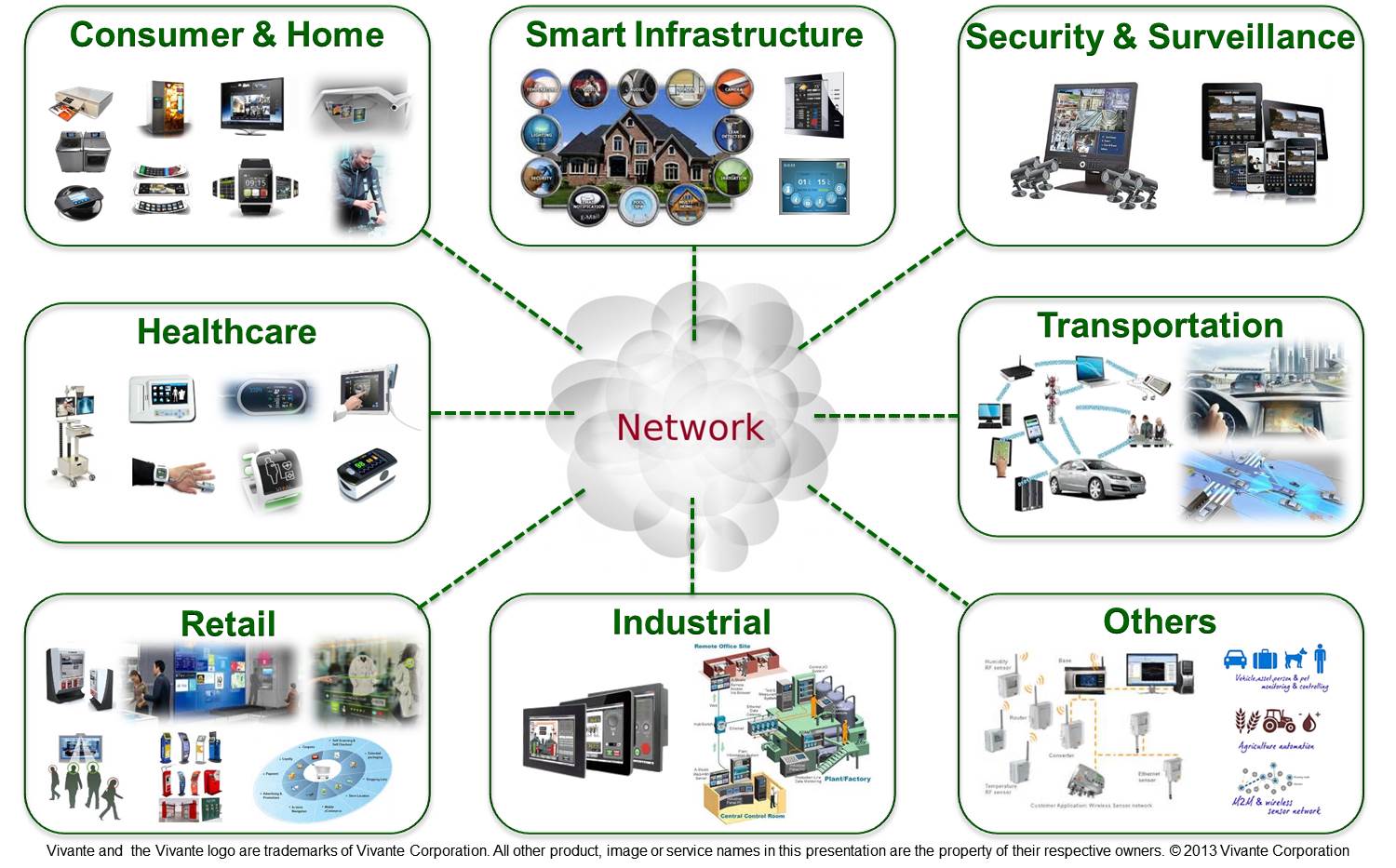Introduction
Welcome to the world of IoT fleet tracking! In today’s fast-paced business landscape, companies with fleets of vehicles constantly seek innovative solutions to enhance their operations. The advent of the Internet of Things (IoT) has paved the way for revolutionary advancements in fleet management by integrating real-time data and analytics. This enables companies to optimize their fleet’s performance, improve efficiency, and reduce costs.
But what exactly is IoT? IoT refers to the interconnected network of physical devices, vehicles, and other objects embedded with sensors, software, and connectivity capabilities. Through the use of IoT technology, these devices can collect, exchange, and analyze data autonomously, leading to enhanced decision-making and automation in various industries.
When it comes to fleet tracking, IoT takes the traditional concept of tracking vehicles to a whole new level. Fleet tracking involves monitoring and managing the activities of a fleet of vehicles, such as cars, trucks, or delivery vans. It enables businesses to gain valuable insights into their fleet’s location, performance, and usage patterns in real-time.
So, why should companies consider adopting IoT fleet tracking? The answer lies in the numerous advantages it offers. By implementing advanced IoT systems, businesses can improve efficiency, reduce fuel consumption, optimize routes, enhance driver safety, and streamline maintenance processes.
This article will delve into the world of IoT fleet tracking, exploring its benefits, functionality, and potential use cases. We will also examine the challenges that organizations might face when implementing IoT fleet tracking and how to overcome them. By the end of this article, you will have a comprehensive understanding of how IoT fleet tracking can revolutionize your business operations and drive success.
What Is IoT?
The Internet of Things (IoT) is a technological ecosystem that connects everyday objects to the internet, allowing them to collect and exchange data. It encompasses a wide range of devices and systems, from smart home appliances and wearable devices to industrial machinery and transportation vehicles.
At its core, IoT is all about connectivity and data exchange. It enables devices to communicate with each other and with users, creating a network of interconnected devices that can share information and perform tasks collaboratively.
IoT devices are equipped with sensors, software, and connectivity capabilities that enable them to collect data and transmit it over the internet. These sensors can measure various parameters such as temperature, humidity, location, motion, and more, depending on the type of device.
The collected data is then processed and analyzed to generate valuable insights or trigger specific actions. For example, in a smart home setting, IoT devices like thermostats or security cameras can adjust the temperature or send notifications to homeowners based on detected movements.
IoT technology has the potential to revolutionize various industries by providing unprecedented levels of connectivity, automation, and data-driven insights. It can optimize processes, enhance efficiency, improve decision-making, and offer new business models and opportunities.
One of the key advantages of IoT is its ability to enable remote control and monitoring. With IoT, users can access and control devices and systems from anywhere using their smartphones or computers. This can be particularly beneficial in scenarios where remote monitoring, management, or troubleshooting is required.
Furthermore, IoT has opened up new possibilities for automation and predictive maintenance. By analyzing real-time data from IoT devices, companies can detect patterns and anomalies, enabling proactive maintenance and reducing downtime. For example, in a manufacturing plant, IoT sensors can monitor machine performance and predict potential failures, allowing maintenance teams to take preventive action before a breakdown occurs.
Overall, IoT is a transformative technology that has the potential to reshape the way we live, work, and interact with the world around us. Its applications are diverse and span across industries, offering numerous benefits and possibilities for innovation.
What Is Fleet Tracking?
Fleet tracking is the process of monitoring and managing a fleet of vehicles using technology and software solutions. It involves tracking various aspects of the fleet, such as location, speed, fuel consumption, driver behavior, and maintenance needs. By leveraging these insights, fleet operators can optimize operations, improve efficiency, and enhance overall performance.
Traditionally, fleet tracking relied on manual methods like paper logs or radio communication to keep tabs on vehicle whereabouts. However, with the advancements in technology, fleet tracking has evolved into a more sophisticated and automated process.
Modern fleet tracking utilizes Global Positioning System (GPS) technology to determine the exact location of vehicles in real-time. GPS devices installed in the vehicles continuously transmit data to a central server, enabling fleet managers to monitor the movement and activities of each vehicle.
Alongside GPS, fleet tracking systems often incorporate a range of sensors and telematics devices that gather additional information about the vehicle’s performance and condition. These devices can monitor parameters like fuel consumption, engine health, mileage, and even driver behavior, such as harsh braking or speeding.
The collected data is then processed and presented through fleet tracking software, allowing fleet operators to access comprehensive insights and analytics. This software provides a centralized platform to track the entire fleet, analyze historical data, generate reports, and set up alerts or notifications for specific events or conditions.
One of the primary objectives of fleet tracking is to improve fleet efficiency and productivity. By harnessing real-time data, fleet managers can optimize routes, minimize idle time, and reduce fuel consumption. Efficient route planning not only saves time and money but also reduces vehicle wear and tear, prolonging their lifespan.
Moreover, fleet tracking enables effective monitoring of driver behavior and adherence to safety regulations. By analyzing data on speed, harsh braking, and other driving patterns, fleet managers can identify areas where driver training or coaching is needed. This not only helps create a safer work environment but also reduces the risk of accidents and associated costs.
Additionally, fleet tracking facilitates proactive maintenance management. By monitoring vehicle performance and receiving alerts for maintenance needs, fleet managers can proactively schedule maintenance tasks, reducing the risk of breakdowns and costly repairs. Predictive maintenance also enables better fleet scheduling and contingency planning.
In essence, fleet tracking is a powerful tool that empowers fleet operators with real-time insights and control over their operations. It helps streamline workflows, improve safety, reduce costs, and enhance overall fleet performance.
Why Use IoT Fleet Tracking?
IoT fleet tracking offers numerous advantages for businesses operating a fleet of vehicles. By harnessing the power of IoT technology, companies can unlock valuable insights, streamline operations, and make data-driven decisions. Here are some compelling reasons to use IoT fleet tracking:
- Real-time Location Monitoring: IoT fleet tracking provides real-time visibility of vehicle locations, allowing fleet managers to track their assets accurately. This enables them to optimize routes, allocate resources efficiently, and respond quickly to customer demands or emergencies.
- Enhanced Efficiency and Productivity: By analyzing data from IoT devices, fleet managers can identify inefficiencies in their operations. They can detect areas where routes can be optimized, reduce idle time, and streamline workflows, ultimately improving fleet productivity.
- Improved Safety and Compliance: IoT fleet tracking enables monitoring of driver behavior, including speeding, harsh braking, and aggressive driving. This promotes safer driving practices, reduces accidents, and ensures compliance with safety regulations.
- Better Fuel Management: Fuel costs make up a significant portion of fleet expenses. IoT fleet tracking helps optimize fuel consumption by identifying fuel-efficient routes, reducing unnecessary idling, and detecting any fuel-related issues or anomalies.
- Proactive Maintenance: By collecting data on vehicle performance, IoT fleet tracking allows for proactive maintenance management. Fleet managers can schedule preventive maintenance based on predictive analytics, reducing the likelihood of breakdowns and expensive repairs.
- Asset Security: IoT fleet tracking provides robust security features to protect company assets. In the event of theft or unauthorized usage, the real-time tracking capabilities help recover stolen vehicles, minimizing losses.
- Better Customer Service: With accurate location data and real-time insights, businesses can provide more precise delivery estimates to customers, enhancing customer satisfaction and loyalty.
- Data-driven Decision Making: The data collected through IoT fleet tracking offers comprehensive insights into the fleet’s performance. Fleet managers can use this data to identify patterns, spot areas for improvement, and make informed decisions to optimize operations.
Overall, IoT fleet tracking empowers businesses to optimize their fleet operations, reduce costs, improve safety, and deliver exceptional customer service. By leveraging IoT technology, companies gain a competitive edge in an increasingly dynamic and demanding business landscape.
Benefits of IoT Fleet Tracking
Implementing IoT fleet tracking offers a host of benefits for businesses operating a fleet of vehicles. By utilizing IoT technology, companies can unlock valuable insights, streamline operations, and enhance overall productivity. Here are some key benefits of IoT fleet tracking:
- Improved Fleet Visibility: IoT fleet tracking provides real-time visibility into the location and status of vehicles. Fleet managers can track their assets accurately, enabling better resource allocation, efficient route planning, and timely responses to customer demands or emergencies.
- Enhanced Efficiency: By leveraging IoT fleet tracking, businesses can optimize operations and improve efficiency. Real-time data on vehicle locations, routes, and driver behavior allows fleet managers to identify areas of improvement, reduce idle time, and streamline workflows, ultimately increasing productivity.
- Reduced Fuel Costs: Fuel expenses can be a significant part of a fleet’s overall budget. IoT fleet tracking helps optimize fuel consumption by identifying fuel-efficient routes, reducing unnecessary idling, and detecting any fuel-related anomalies. This leads to substantial savings in fuel costs.
- Driver Behavior Improvement: IoT fleet tracking allows for monitoring and analyzing driver behavior. Fleet managers can identify instances of speeding, harsh braking, or aggressive driving and take corrective actions by providing training or coaching. This promotes safer driving practices and reduces the risk of accidents.
- Proactive Maintenance Management: With IoT fleet tracking, businesses can proactively manage vehicle maintenance. By collecting data on vehicle performance, fleet managers can schedule preventive maintenance based on predictive analytics, reducing the likelihood of breakdowns and expensive repairs. This leads to increased fleet uptime and improved operational efficiency.
- Enhanced Asset Security: IoT fleet tracking offers robust security features to protect company assets. Real-time tracking capabilities help track and recover stolen vehicles, significantly minimizing losses due to theft or unauthorized usage. This enhances asset security and reduces financial risk.
- Improved Customer Service: Accurate location data and real-time insights provided by IoT fleet tracking enable businesses to offer better customer service. Delivery estimates can be more precise, and customers can be informed of any delays or changes in real-time. This enhances customer satisfaction and loyalty.
- Data-driven Decision Making: The data collected through IoT fleet tracking provides valuable insights into fleet performance. Fleet managers can analyze this data to identify patterns, spot areas for improvement, and make data-driven decisions to optimize operations, reduce costs, and improve overall efficiency.
These benefits of IoT fleet tracking empower businesses to streamline their operations, reduce costs, improve safety, enhance customer service, and achieve a competitive edge in the market. By harnessing IoT technology, companies can unlock the full potential of their fleet and drive success.
How Does IoT Fleet Tracking Work?
IoT fleet tracking involves the use of various technologies and components working together seamlessly. It starts with the installation of IoT devices and sensors in fleet vehicles, which collect and transmit data to a central server. Here’s a step-by-step overview of how IoT fleet tracking works:
- Installation of IoT Devices: IoT devices, such as GPS trackers and telematics devices, are installed in fleet vehicles. These devices are equipped with sensors, connectivity capabilities, and software to collect and transmit data.
- Data Collection: The IoT devices capture a wide range of data, including vehicle location, speed, fuel consumption, engine health, and driver behavior. These sensors continuously gather data and send it to the central server in real-time.
- Data Transmission: The data collected by IoT devices is transmitted over wireless networks, such as cellular networks or satellite communication, to the central server. This enables fleet managers to access real-time information about their vehicles’ location, performance, and other relevant metrics.
- Data Processing and Analytics: The data received by the central server is processed and analyzed using sophisticated fleet tracking software. This software sorts and organizes the data to generate insights and actionable information for fleet managers.
- Visualization and Reporting: The processed data is then presented in a user-friendly dashboard, providing fleet managers with a visual representation of their fleet’s performance. This includes real-time maps, historical data, customized reports, and performance metrics to track key indicators.
- Alerts and Notifications: IoT fleet tracking systems can be configured to send automated alerts and notifications based on predefined rules or events. For example, fleet managers can receive alerts when a vehicle deviates from its planned route, exceeds the speed limit, or requires maintenance.
- Integration with Other Systems: IoT fleet tracking software can be integrated with other systems, such as customer relationship management (CRM) and enterprise resource planning (ERP) systems, to enable seamless data exchange and enhance overall operational efficiency.
- Data Security and Privacy: As with any IoT system, data security and privacy are essential considerations in IoT fleet tracking. Robust measures, such as secure data transmission protocols, encryption, and access controls, are implemented to protect the data and ensure compliance with privacy regulations.
The combination of IoT devices, data transmission, processing, and analytics, along with visualization and reporting, forms the foundation of IoT fleet tracking. This technology enables fleet managers to monitor and optimize fleet operations, enhance efficiency, ensure driver safety, and make informed decisions based on real-time data.
Types of IoT Fleet Tracking Devices
IoT fleet tracking systems utilize various types of devices and technologies to collect and transmit data from fleet vehicles. These devices are designed to capture specific information, such as location, speed, and vehicle diagnostics. Here are some common types of IoT fleet tracking devices:
- GPS Trackers: GPS trackers are one of the most widely used devices in IoT fleet tracking. They utilize Global Positioning System (GPS) technology to determine the precise location of vehicles. GPS trackers can transmit real-time location data, speed, and heading information to the central server.
- Telematics Devices: Telematics devices are comprehensive IoT devices that combine multiple functionalities. They integrate GPS technology, sensors, and connectivity capabilities to collect data on vehicle performance, fuel consumption, engine diagnostics, and driver behavior. Telematics devices provide a holistic view of fleet operations.
- OBD-II Devices: OBD-II (On-Board Diagnostics) devices are plugged into a vehicle’s OBD-II port to collect information on vehicle diagnostics and performance. They can monitor engine parameters, fuel efficiency, emissions, and other vehicle-specific data. OBD-II devices are commonly used for fleet tracking and preventive maintenance.
- Engine Control Module (ECM) Devices: ECM devices interface with a vehicle’s Engine Control Module, extracting detailed information on engine performance, engine faults, and other critical metrics. This data helps fleet managers monitor engine health, optimize fuel efficiency, and identify potential maintenance needs.
- RFID (Radio Frequency Identification) Tags: RFID tags use radio frequency technology to track vehicle movements and automate data collection. These tags are placed on vehicles and can be detected by RFID readers at specific points or locations. RFID technology helps in automating tasks like vehicle entry/exit, toll payments, and access control.
- CAN (Controller Area Network) Bus Devices: CAN bus devices tap into a vehicle’s CAN bus system, which is responsible for communication between various electronic control units within the vehicle. These devices gather data on vehicle diagnostics, engine performance, and other parameters directly from the vehicle’s internal network.
Each type of IoT fleet tracking device offers unique capabilities and advantages. The choice of device depends on the specific requirements and objectives of the fleet tracking system, as well as the desired level of data granularity and functionality needed for effective fleet management.
Features of IoT Fleet Tracking Software
To leverage the full potential of IoT fleet tracking, businesses rely on dedicated fleet tracking software. These software solutions provide a range of features and functionalities that enable fleet managers to monitor and optimize their operations effectively. Here are some key features commonly found in IoT fleet tracking software:
- Real-time Vehicle Tracking: IoT fleet tracking software offers real-time vehicle tracking capabilities, allowing fleet managers to monitor the location, speed, and heading of their vehicles on a map. This provides a comprehensive view of fleet activities at any given moment.
- Geofencing: Geofencing allows fleet operators to define virtual boundaries or areas on a map. When a vehicle enters or exits a defined geofence, the fleet tracking software can trigger automated notifications or alerts. Geofencing helps monitor vehicle movement in specific areas and enables proactive management.
- Route Optimization: Fleet tracking software can optimize routes for more efficient navigation. By considering factors like traffic conditions, vehicle capabilities, and delivery schedules, the software can suggest the most optimal routes, reducing travel time, fuel consumption, and overall operational costs.
- Driver Behavior Monitoring: IoT fleet tracking software can analyze and report on driver behavior, including speeding, harsh braking, rapid acceleration, and excessive idling. These insights help fleet managers identify driver training needs, improve safety, and reduce the risk of accidents.
- Maintenance Management: Fleet tracking software aids in proactive maintenance management. It can track vehicle performance metrics and send alerts or notifications for scheduled maintenance tasks or potential issues. By properly managing maintenance, fleet managers can reduce downtime and extend the lifespan of their vehicles.
- Reporting and Analytics: IoT fleet tracking software provides comprehensive reporting and analytics capabilities. Fleet managers can generate customized reports on key performance indicators, such as fuel consumption, mileage, driver activity, and more. These reports offer valuable insights for informed decision-making and performance evaluation.
- Integration and Compatibility: Fleet tracking software can integrate with other systems, such as CRM or ERP software, to enable seamless data exchange and process automation. This integration enhances operational efficiency and enables a holistic view of business operations.
- Mobile Accessibility: Many fleet tracking software solutions offer mobile applications or responsive web interfaces, allowing fleet managers to access real-time data and insights on their smartphones or tablets. This mobile accessibility enables monitoring and management on-the-go.
- Alerts and Notifications: Fleet tracking software can generate automated alerts and notifications for specific events or exceptions. Fleet managers can receive real-time notifications for events like vehicle breakdowns, unauthorized vehicle usage, or driver violations, enabling immediate action or intervention.
These features collectively empower fleet managers to make informed decisions, optimize operations, improve efficiency, and enhance overall fleet performance. The availability of these features can vary depending on the specific fleet tracking software chosen, and businesses can select a solution that best aligns with their unique requirements.
Use Cases for IoT Fleet Tracking
IoT fleet tracking has numerous applications across various industries. It offers valuable insights and improved efficiency for businesses operating fleets of vehicles. Here are some common use cases for IoT fleet tracking:
- Transportation and Logistics: IoT fleet tracking is widely used in transportation and logistics companies to monitor the movement of goods and vehicles. It enables real-time tracking, route optimization, and efficient dispatching, leading to improved delivery times, reduced costs, and enhanced customer satisfaction.
- Public Transportation: Public transportation systems, such as buses or trains, can utilize IoT fleet tracking to improve schedule accuracy, passenger information, and system efficiency. Real-time tracking allows commuters to access accurate arrival times, plan their journeys better, and reduces waiting times at stops or stations.
- Delivery and Last-Mile Operations: IoT fleet tracking is integral to the success of delivery services. Companies in e-commerce, courier services, and food delivery rely on accurate real-time tracking to optimize routes, manage delivery windows, and provide customers with precise updates on their shipments or orders.
- Construction and Heavy Equipment: IoT fleet tracking is used to monitor and manage construction vehicles and heavy equipment. It enables efficient equipment allocation, tracks equipment utilization, and improves maintenance planning. Real-time tracking ensures the right equipment is available at the right time, reducing downtime and optimizing resource allocation.
- Field Service Management: Companies offering field services, such as HVAC, plumbing, or maintenance, can benefit from IoT fleet tracking. It enables efficient job allocation, real-time vehicle tracking, and optimized routes based on current job locations. This ensures timely service delivery, reduces travel time, and enhances customer satisfaction.
- Emergency and Public Safety Services: Emergency services, including police, fire departments, and ambulance services, employ IoT fleet tracking to respond quickly and efficiently to emergencies. Real-time tracking enables dispatchers to identify the closest vehicles, optimize emergency response routes, and coordinate resources effectively to save lives and protect communities.
- Waste Management: Waste management companies utilize IoT fleet tracking to optimize waste collection processes. Real-time tracking allows route optimization, reduces fuel consumption, and ensures timely collection. It also helps monitor container fill levels, enabling proactive collection and optimizing the workflow of waste management operations.
- Taxi and Rideshare Services: IoT fleet tracking plays a vital role in the efficiency and coordination of taxi and rideshare services. It enables real-time tracking, matches customers with available vehicles, optimizes routes to minimize travel time, and enhances overall passenger experience and service quality.
These use cases highlight the versatility and value that IoT fleet tracking brings to various industries. By harnessing the power of IoT technology, businesses can optimize their fleet operations, reduce costs, improve customer service, and gain a competitive edge in the market.
Challenges of IoT Fleet Tracking
While IoT fleet tracking offers numerous benefits, there are also challenges that businesses may face when implementing this technology. These challenges can range from technical issues to operational hurdles. It is important to be aware of these challenges and develop strategies to address them effectively. Here are some common challenges of IoT fleet tracking:
- Data Security and Privacy: With a large volume of sensitive data being transmitted and stored, data security and privacy are major concerns in IoT fleet tracking. Businesses must implement robust security measures to protect data from unauthorized access, ensure secure data transmission, and comply with privacy regulations.
- Reliability of Connectivity: IoT fleet tracking relies on the availability of reliable connectivity, such as cellular networks or satellite communication. However, in remote areas or areas with poor network coverage, connectivity issues can arise, leading to data gaps or delayed data transmission. Ensuring reliable connectivity across all operating areas can be a challenge.
- Data Integration and Compatibility: Integrating IoT fleet tracking data with other systems, such as CRM or ERP, can be complex due to differences in data formats and system compatibility. Ensuring seamless data integration and proper system compatibility requires careful planning, coordination, and possibly custom development or integration solutions.
- Device Maintenance and Upgrades: IoT devices used for fleet tracking require regular maintenance and occasional firmware upgrades. Managing the maintenance and upgrade cycle across a fleet of vehicles can be challenging, especially if vehicles are spread across different locations. This requires proper planning and coordination to minimize disruptions.
- Driver Adoption and Resistance: Introducing IoT fleet tracking may face resistance from drivers who may perceive it as a monitoring tool rather than a solution to improve operations. Proper communication, training, and involvement of drivers in the implementation process are necessary to address concerns and ensure driver adoption.
- System Complexity and Scalability: IoT fleet tracking systems can be complex, involving multiple sensors, devices, and software components. Scaling the system to accommodate a growing fleet or expanding business operations requires careful planning and consideration of system scalability to avoid performance bottlenecks and maintain system efficiency.
- Data Overload and Analysis: With the abundance of data collected by IoT fleet tracking, businesses may find it challenging to extract meaningful insights and make informed decisions. Proper data management and analytics capabilities are crucial to efficiently process and analyze data, transforming it into valuable insights for actionable improvements.
- Cost Considerations: Implementing an IoT fleet tracking solution involves upfront costs for devices, software licenses, and ongoing maintenance. It is essential to carefully evaluate the return on investment (ROI) and consider the long-term benefits to justify the upfront costs and ensure that the solution aligns with the business’s financial objectives.
By understanding and addressing these challenges, businesses can successfully implement and leverage IoT fleet tracking to optimize their operations, improve efficiency, and gain a competitive edge in their industry.
Conclusion
IoT fleet tracking is revolutionizing the way businesses manage and optimize their fleet operations. By leveraging the power of IoT technology, companies can gain real-time insights, improve efficiency, reduce costs, and enhance customer service. The combination of IoT devices, data transmission, fleet tracking software, and analytics has opened up new possibilities for fleet managers to make data-driven decisions and streamline their operations.
In this article, we explored the concept of IoT fleet tracking, understanding how it integrates IoT technology with fleet management practices. We discussed the benefits of IoT fleet tracking, such as improved fleet visibility, enhanced efficiency, and proactive maintenance management. Additionally, we explored the features commonly found in IoT fleet tracking software, including real-time tracking, driver behavior monitoring, and reporting capabilities.
We also delved into various use cases for IoT fleet tracking, spanning across transportation and logistics, public transportation, delivery services, construction, and more. These use cases highlighted the versatility and value that IoT fleet tracking brings to different industries, powering operational optimization, customer satisfaction, and cost reduction.
While IoT fleet tracking brings significant advantages, it is important to recognize and address the challenges associated with its implementation. Challenges such as data security, connectivity reliability, device maintenance, and driver adoption must be carefully managed to ensure effective deployment and utilization of IoT fleet tracking technology.
In conclusion, IoT fleet tracking is a powerful tool that empowers businesses to optimize operations, improve efficiency, and drive success. By embracing IoT technology and leveraging the insights provided by IoT fleet tracking, businesses can make informed decisions, achieve cost savings, enhance safety, and deliver exceptional customer service. It is evident that IoT fleet tracking is shaping the future of fleet management, allowing businesses to stay ahead in an increasingly competitive and demanding business landscape.






















